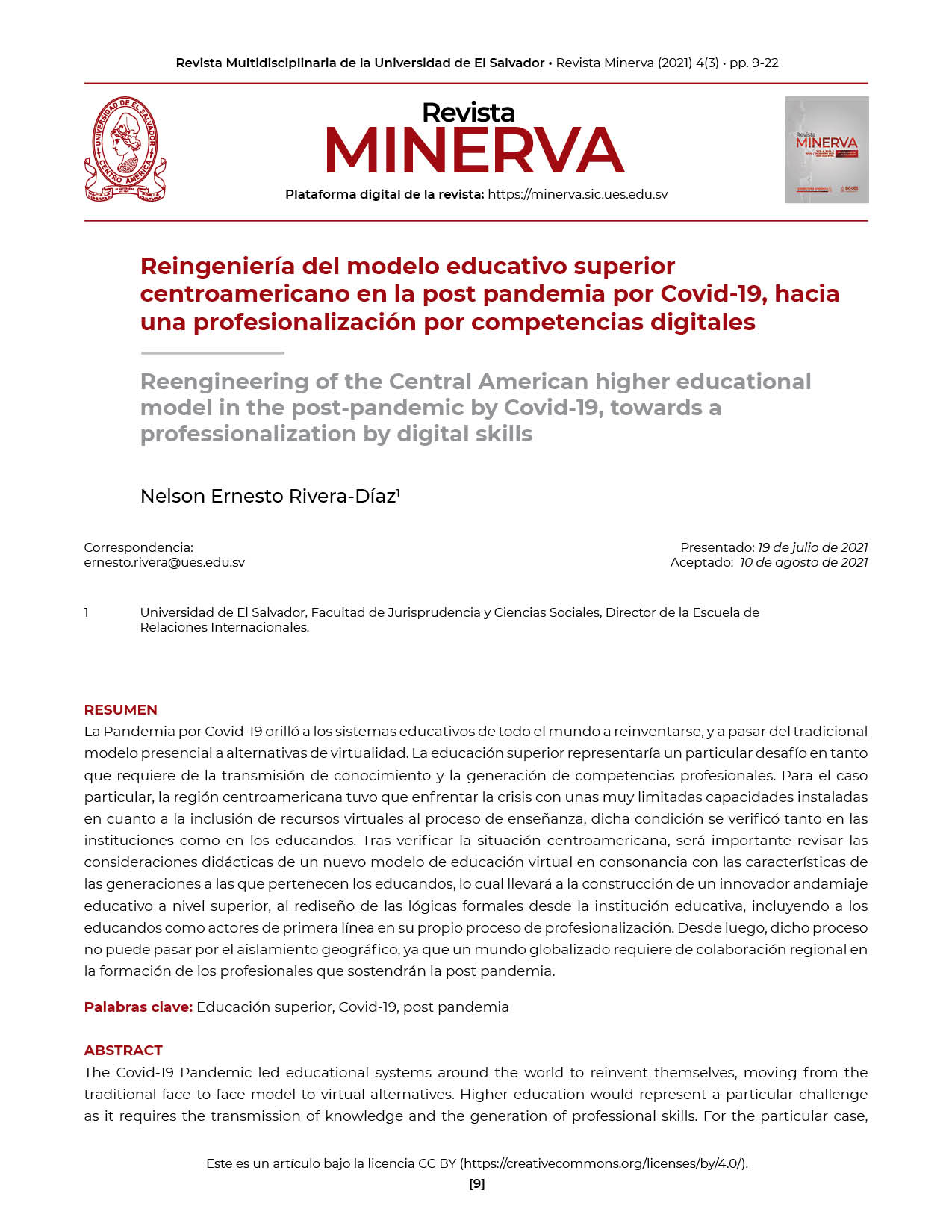Abstract
The Covid-19 Pandemic led educational systems around the world to reinvent themselves, moving from the traditional face-to-face model to virtual alternatives. Higher education would represent a particular challenge as it requires the transmission of knowledge and the generation of professional skills. For the particular case, the Central American region would have to face the crisis with very limited installed capacities in terms of the inclusion of virtual resources in the teaching process, verifying this condition in the institutions and students. After verifying the Central American situation, it will be important to review the didactic considerations of a new virtual education model in line with the characteristics of the generations to which the students belong, which will lead to the construction of an innovative scaffolding at a higher education, redesigning the formal logics from the educational institution, including students as front-line actors in their own professionalization process. Of course, this process cannot go through geographic isolation, since a globalized world requires regional collaboration in the training of professionals who will sustain the post-pandemic.

This work is licensed under a Creative Commons Attribution 4.0 International License.
Copyright (c) 2021 Authors who publish in Revista Minerva agree to the following terms: Authors continue as owners of their work, assigning only dissemination rights to Minerva Magazine under the standards of the Creative Commons Attribution 4.0 International License (CC BY 4.0). This license allows others to mix, adapt and build upon the work for any purpose, including commercially, and although new works must also acknowledge the initial author, they do not have to license derivative works under the same terms.





